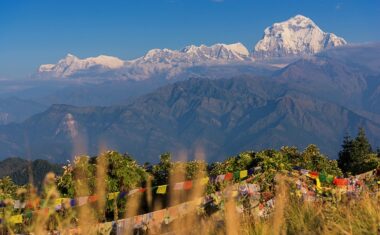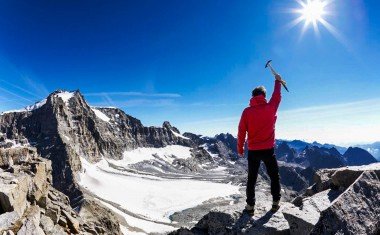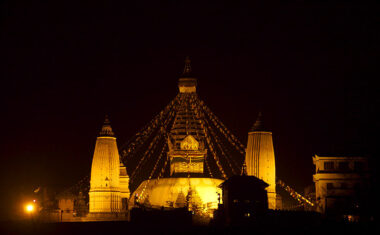“Ultimate Kailash Mansarovar Yatra: 10-Day Overland Journey from Kathmandu”
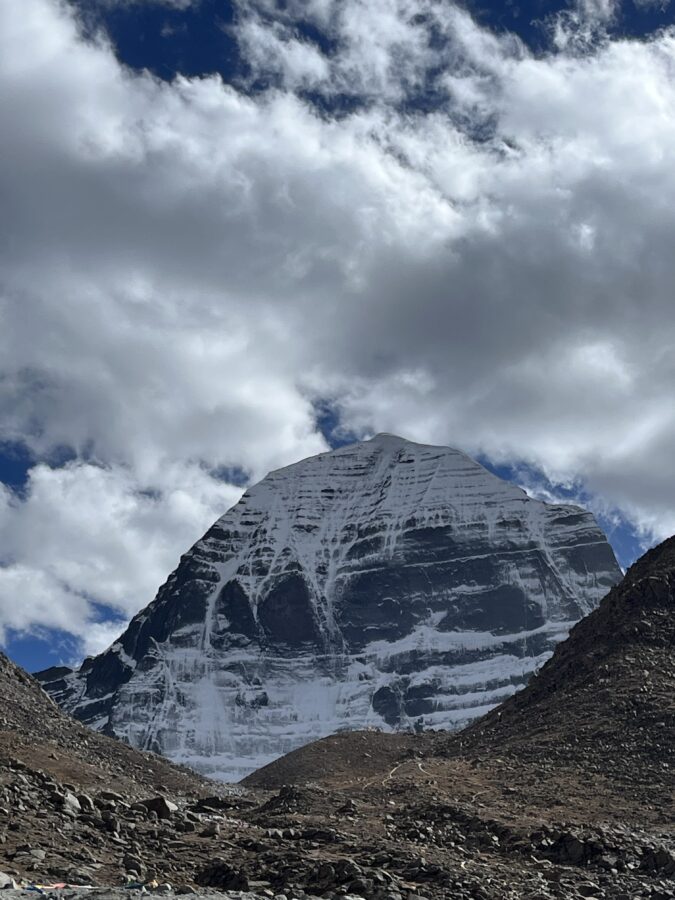
-
Overview
Itinerary
- Grade: medum
- Duration: 10 days 9 night
- Destination: Nepal, Tibet
- Activities: Cultural Tours
- Departure: Every Purnima
- Best Seasons: April - October
- Minimum Altitude: 1300 meter
- Highest Altitude: 4650 meter
- Start-Ends: Kathmandu - Kathmandu
- Per day walking: 4-6 hours
- Min. Pax: 02
- Mode of Travel: Bus
- Mode of Travel: Nepal and Tibet
- Nearest Major Airport: TIA
- Destination: Tibet
- Culture: Hindu and Tibetan
- Himalayan Sights: Mount Kailash 6,638 meter
- Trek Attraction: Mount Kailash and Lake Mansarover
“Embark on a spiritual odyssey with our 10-day Kailash Mansarovar Yatra package. Traverse rugged terrains, ancient monasteries, and sacred sites as you immerse in the divine aura of Mount Kailash. Experience profound spiritual enlightenment amidst breathtaking Himalayan landscapes. Join us for an unforgettable pilgrimage of a lifetime.”
Mount Kailash:
Mount Kailash (6714m) stands as an unparalleled marvel in Western Tibet, revered across Hinduism, Buddhism, Jainism, and the Bon religion. Hindus honor it as Lord Shiva’s abode, while Tibetan Buddhists venerate it as the dwelling of Samvara. Jains believe it to be where their saints attained emancipation, and Bonpos regard it as sacred Swastika Mountain, where their founder descended from heaven.
Lake Manasarovar:
Nestled beneath the majestic Mount Kailash lies Lake Manasarovar (4560m), a revered site where a ceremonial dip is believed to lead pilgrims to Brahma’s paradise. Drinking its water is thought to absolve sins accumulated over lifetimes. The 53km Kailash circuit is Tibet’s most sacred pilgrimage route, attracting countless travelers to Western Tibet. Legend holds that a single Parikrama cleanses a lifetime of sins, while 108 circumambulations bring salvation or nirvana.General Information on Kailash Yatra :
Fitness:
This journey isn’t a trek or expedition, but rather a tour, making it accessible to all with a strong will. While no specific fitness level is required, individuals with cardiac or respiratory issues should consult a physician. Morning and evening walks, along with regular exercise and meditation, enhance comfort during the journey.
Food and Beverage:
We offer vegetarian meals, with breakfast and dinner served by Nepali-trained staff at the hotel/guesthouse. Packaged lunches are provided for daytime excursions.
Clothing and Necessities:
Given the temperature fluctuations (ranging from max. 20°C to min. –10°C), appropriate clothing is crucial. Recommended items include woolen gloves, a balaclava, sun hat, thermal wear, water bottle, woolen socks, towel, light jacket, sunglasses, sun cream, torch with extra batteries/bulbs, muffler, mask, raincoat, sweater, and trekking shoes.
Insurance:
We strongly advise comprehensive travel insurance covering medical expenses, helicopter evacuation in emergencies, loss of belongings, and trip cancellations.
In Case of Emergency:
If anyone experiences altitude-related or other physical issues and decides to return, we offer rapid evacuation by Land Cruiser since helicopter services are often unavailable for overland yatras. Additional costs are the responsibility of the client and must be settled on-site.
CRUCIAL PRE-DEPARTURE DETAILS:
Reservation Procedure: Please ensure your booking is confirmed well in advance. A deposit of 30% of the total cost, along with a copy of your passport, is mandatory. The remaining amount must be settled prior to your tour departure date at our office in Kathmandu.
Cancellation Policy for Tours:
1. Cancellations must be communicated in writing to our office; verbal cancellations will not be accepted.
2. If cancellation occurs 20 days before the trip departure, a 10% charge of the total trip cost will apply.
3. Cancellations made 10 days before the trip departure will incur a charge of 25% of the total trip cost.
4. For cancellations made 7 days before the trip departure, a charge of 50% of the total trip cost will be applied.
5. Cancellations made within 3 days of departure will result in a charge of 100% of the total trip cost.
Frequently Asked Questions (FAQs):
- What food is served at Kailash Mansarovar Yatra?
Vegetarian food is predominantly served during the Kailash Mansarovar Yatra. Breakfast and dinner are typically provided at hotels or guesthouses and are prepared by Nepali-trained staff. For daytime excursions, packed lunches are usually provided to the participants.
2. What is the Specialty of Mansarovar?
Lake Mansarovar holds immense religious significance for Hindus, Buddhists, Jains, and Bon followers. It is believed that a ritual bath in the sacred waters of Mansarovar can purify one’s soul and lead to spiritual enlightenment. Drinking the water from Mansarovar is also believed to cleanse one’s sins.
3. What is the significance of the pilgrimage to Kailash Mansarovar?
The pilgrimage to Kailash Mansarovar is considered one of the holiest journeys in Hinduism, Buddhism, Jainism, and Bon religion. Hindus believe Mount Kailash to be the abode of Lord Shiva, while Buddhists consider it as the residence of Buddha Demchok. Jains believe it to be the place where their first saint attained nirvana. The pilgrimage is regarded as a path to spiritual awakening, enlightenment, and purification of the soul.
4. How far is Kailash Mansarovar from Nepal by road?
The distance between Kailash Mansarovar and Nepal varies depending on the specific route taken. Generally, the overland journey from Kathmandu, Nepal, to Kailash Mansarovar in Tibet covers a distance of approximately 1300 kilometers. This journey typically takes several days, with travel through rugged terrains and high-altitude passes.
5. Is Kailash Mansarovar yatra difficult?
The difficulty level of the Kailash Mansarovar Yatra can vary depending on factors such as the route taken, individual fitness levels, altitude acclimatization, and weather conditions. While the journey is not considered a trek or expedition, it does involve traveling through rugged terrain, high-altitude passes, and varying climatic conditions. Participants should be prepared for long hours of travel, including some strenuous sections such as the Kailash Parikrama trek. Adequate physical fitness, proper acclimatization, and mental preparedness are essential for a successful and comfortable pilgrimage experience. Overall, while the yatra presents challenges, it is manageable for most individuals with proper preparation and determination.
Outline Itinerary
- 1 : Drive from Kathmandu to Syabrubesi, then to Timure.
- 2 : ourney continues from Timure to Kerung (2850 meters).
- 3 : Proceed to Saga (4550 meters).
- 4 : From Saga to the banks of Lake Manasarovar (4550 meters).
- 5 : Arrive in Darchen (4650 meters).
- 6 : Begin the outer Kora trek to Dirapuk (4860 meters).
- 7 : Trek to Zuthulpuk via Dolma La Pass (4670 meters).
- 8 : Return journey to Saga (4550 meters).
- 9 : Return from Saga to Kerung (2850 meters).
- 10 : Return journey from Kerung to Kathmandu (1400 meters), concluding the Kailash Yatra.
MapsDetail Itinerary
-
1: Drive from Kathmandu to Syabrubesi, then to Timure.
Embark on your Kailash Mansarovar Yatra as you depart from Kathmandu and head towards Syabrubesi. En route, soak in the scenic beauty of the Nepalese countryside before continuing to Timure, a quaint village bordering Nepal and Tibet.
-
2: ourney continues from Timure to Kerung (2850 meters).
Continue your journey from Timure, gradually ascending to Kerung at an altitude of 2850 meters. Enjoy breathtaking views of the surrounding mountains and immerse yourself in the unique cultural ambiance of the region.
-
3: Proceed to Saga (4550 meters).
Proceed further on your pilgrimage, traveling to Saga, situated at an elevation of 4550 meters. As you journey through rugged terrain, marvel at the Himalayan landscapes unfolding before your eyes, creating a sense of awe and reverence.
-
4: From Saga to the banks of Lake Manasarovar (4550 meters).
Experience a profound moment as you arrive at the banks of Lake Manasarovar, located at an altitude of 4550 meters. This sacred lake holds immense spiritual significance, offering pilgrims the opportunity for introspection and renewal amidst its serene waters.
-
5: Arrive in Darchen (4650 meters).
Reach Darchen, the starting point of the Kailash Parikrama, at an elevation of 4650 meters. Prepare yourself for the spiritual journey ahead and take a moment to reflect on the significance of the path you are about to embark upon.
-
6: Begin the outer Kora trek to Dirapuk (4860 meters).
Commence the outer Kora trek from Darchen to Dirapuk, ascending to an altitude of 4860 meters. As you traverse this ancient route, be inspired by the rugged beauty of the landscape and the spiritual energy that permeates the air.
-
7: Trek to Zuthulpuk via Dolma La Pass (4670 meters).
Embark on a challenging trek to Zuthulpuk via the Dolma La Pass, reaching an altitude of 4670 meters. This leg of the journey is marked by steep ascents and descents, offering pilgrims the opportunity for physical and spiritual growth.
-
8: Return journey to Saga (4550 meters).
Embark on the return journey to Saga, retracing your steps through the awe-inspiring landscapes of Tibet. Take this time to reflect on the experiences and insights gained during your pilgrimage to Mount Kailash and Lake Manasarovar.
-
9: Return from Saga to Kerung (2850 meters).
Return from Saga to Kerung, descending to an altitude of 2850 meters. As you bid farewell to Tibet, cherish the memories of your transformative journey and the connections forged along the way.
-
10: Return journey from Kerung to Kathmandu (1400 meters), concluding the Kailash Yatra.
Conclude your Kailash Yatra as you journey back from Kerung to Kathmandu, descending to an altitude of 1400 meters. Reflect on the spiritual significance of your pilgrimage and carry the blessings of Mount Kailash and Lake Manasarovar with you as you return home.
Notes & Inclusion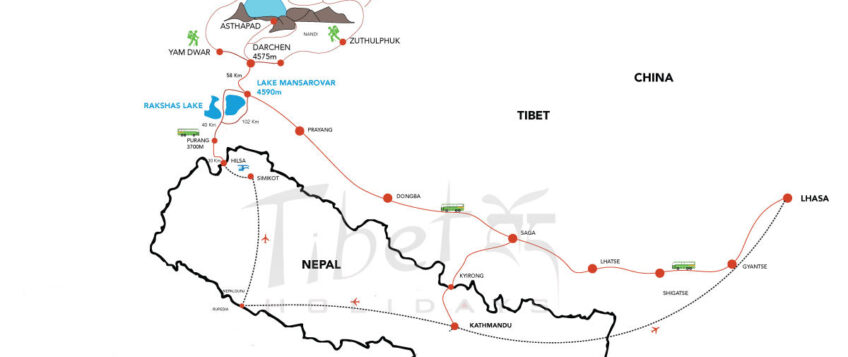
Cost Includes
- Accommodation in guesthouses for 9 night
- Daily breakfast, lunch, and dinner (included)
- Trekking: Dirapuk and Zuthulpuk on the Kailash Parikrama
- Sightseeing at Peikutso Lake, exploration of Mount Shishapangma, and Brahmaputra River
- Holy dip in Lake Manasarovar during the parikrama
- Permits/visas for the group
- Chinese visa fees/entry fees
- Overland transfers as per the itinerary
- Tibetan guide provided by the China Tibet Tourism Board
- Oxygen cylinders for the group
- All applicable taxes and service charges
Cost Excludes
- Personal Expenses: Expenses for personal items, souvenirs, and additional activities not included in the itinerary.
- Insurance of trip cancellations, and loss of belongings.
- Tips: Gratuities for guides, drivers, and support staff.
- Additional Services: Any additional services not mentioned in the itinerary or not included in the package.

